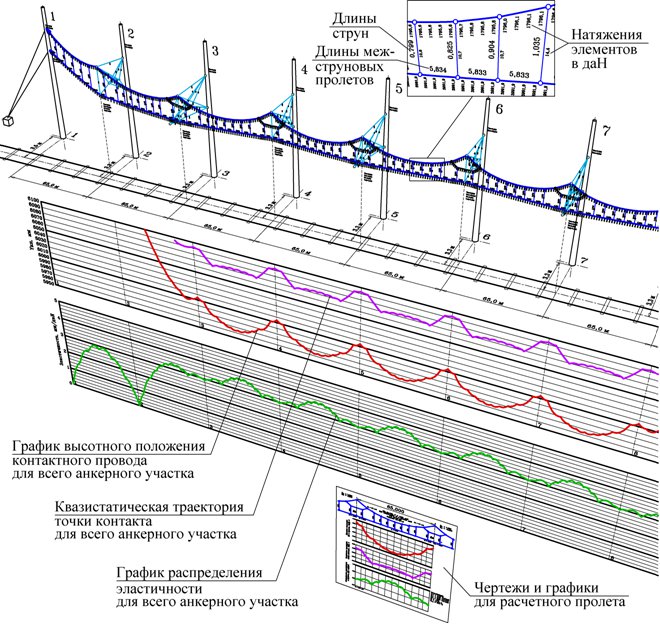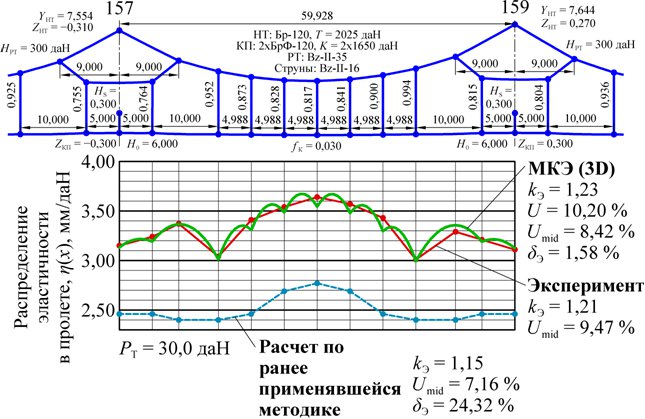
Creation of static finite-element overhead catenary models
 When designing an overhead system, it is vital to perform engineering calculations, the major part of which is related to the mechanical design of static overhead catenaries. Wire length calculation, those of spatial altitude and catenary wire tension, elasticity, overhead catenary parameters calculations based on the environmental impact changes (e.g. temperature change, glaze formation, wind exposure, contact wire wear-out), etc.
When designing an overhead system, it is vital to perform engineering calculations, the major part of which is related to the mechanical design of static overhead catenaries. Wire length calculation, those of spatial altitude and catenary wire tension, elasticity, overhead catenary parameters calculations based on the environmental impact changes (e.g. temperature change, glaze formation, wind exposure, contact wire wear-out), etc.
In practice, traditional overhead catenary mechanical calculation methods, widely implemented in our country up to nowadays, are no longer valid and thus deprive us an opportunity to determine the overhead catenary parameters for high velocities with required degree of reliability. Traditional methods have to do with great deal of simplifications along with those empiric formulae, only valid for low velocity overhead catenaries.
 As far as the computer technologies advance, it has become possible to create detailed overhead catenary distributed constant mathematical models, enabling to perform calculations at a completely new level.
As far as the computer technologies advance, it has become possible to create detailed overhead catenary distributed constant mathematical models, enabling to perform calculations at a completely new level.
UCN has developed a few of dimensional static finite-element overhead catenary models, based on the finite-element method (FEM) with minimum number of suppositions.
The models’ adequacy is ensured through comparison of calculation results with experimental evidences from the Kalashnikovo-Likhoslavl area during the 2006-2008 tests.Copyright © 2004-2025 J.S.C. «UNIVERSAL CATENARY SYSTEMS» Developed by«Internet Promotion»
